DIY – The cheaper option
Quite often I speak to clients who are self funding their first CD pressing, and they ask me what software they can use to create the artwork and master. If you have a spare £ 3,000 – £ 5,000, then get “Adobe Creative Suite” and the upcoming “SADiE native”, but then again, if you have that sort of spare money, I would get a professional mastering engineer and designer on the case. But then sometimes budgets are limited and I am asked what cheap, or better still, free software is available to do the job. Actually it is quite surprising how much can be done with free or trial versions of software. But let’s not forget that things have not always been quite so simple…………
Up until the mid 1970’s, if you wanted to release a record you almost certainly had to be signed to a large record label. As soon as the ink on the contract had dried, you would be ushered to a world class studio to spend the next six months recording your epic début. But then along came Punk, and things would never be the same again.
Many who followed the Punk scene would watch a band, buy their single, and then think “I could do that”. And they did, lots of them. It was not so easy to make your own records back then, company’s like Pure Music Manufacturing did not exist, major record companies owned their own pressing plants and had mastering rooms and printers queuing up to do their work. This was not the case for the budding record label owner, they would have to find a mastering room, then a pressing plant and someone to print the labels and the sleeves and would have to arrange for all these elements to be collected and delivered to the right place, at the right time. A bit of a nightmare to be honest.
Then some bright spark thought, lets set-up a company where bands can come to a “one stop shop” and just drop off the master-tapes and artwork and organise the rest. I would like to say that bright idea was mine, but it wasn’t, I was still in short trousers at this time.
A new music revolution was borne, with independent record labels springing up all over the country, and it didn’t stop with Punk, in the early 80’s the “indie” music scene took off and then in the late 80’s it was acid house. And this “indie” ethos continues today.
One of the things that has been associated with independent record releases is a DIY element to it all. It is quite normal for the band and the label owner to be involved in everything from recording, mixing, mastering to creating the artwork. Up until recently you would still need to to go to a professional mastering engineer to produce the master and a graphic designer to create the artwork. But today it is possible to to produce really great artwork and perfectly acceptable masters on nearly any computer, allowing the label or artist to take full control of the creative process “in house” and provide masters and artwork to CD manufacturers.
A word of warning though, if time and budget allows, I ALWAYS recommend having a professional do the mastering & design. But then I suppose it wouldn’t be DIY, and I know DIY is what some of our smaller clients want. The next thing I will say, you can give a man a set of knives, but it doesn’t make him a chef. If you feel you are completely out of your depth getting to grips with the software you need to create masters or artwork, call in the professionals. On the other hand, if you know the basics and are willing to learn, have a go, it can be fun, and you will normally find the answers to most common problems on the internet, google is truly your friend.
Desktop Publishing & Image Editing Tools
Adobe Creative Suite 5
 No it’s not free, but Adobe offer a 30 day free trial, and during the trial the software is FULLY functional. That’s the good news, the bad news, this software suite is huge, and I mean a behemoth. You could spend a lifetime learning all the tricks and features of the full suite, I have been using it for years and still find new things to play with. If you are already familiar with the Adobe Creative suite the 30 day trial should give you enough time to create your artwork. However it could be a steep learning curve for those not familiar with this package. Remember after the 30 day trial you will not be able to go back and edit the artwork, unless you downloaded the trial to another computer, but that would be cheeky!
No it’s not free, but Adobe offer a 30 day free trial, and during the trial the software is FULLY functional. That’s the good news, the bad news, this software suite is huge, and I mean a behemoth. You could spend a lifetime learning all the tricks and features of the full suite, I have been using it for years and still find new things to play with. If you are already familiar with the Adobe Creative suite the 30 day trial should give you enough time to create your artwork. However it could be a steep learning curve for those not familiar with this package. Remember after the 30 day trial you will not be able to go back and edit the artwork, unless you downloaded the trial to another computer, but that would be cheeky!
My advice, just concentrate on InDesign and Photoshop, unless you have good reason to delve into the vector graphics of Illustrator. Please, please, please remember, Photoshop is best suited to editing images and photos, InDesign is best used for text layout. Yes, you can do all your text layout in Photoshop, but that is not what it does best.
If you know how to layout text in Photoshop, then you can do it in InDesign. I am going to do a future blog to explain the reasons I don’t recommend text layout in Photoshop, but for now just take my word for it. We also provide templates for all of vinyl, DVD and CD packaging in this format.
Gimp
 This is surprisingly good photo / image editing software, and it is completely free. It has many of the features of Photoshop, but maybe not quite as easy to use, again as with Photoshop, DO NOT use it to layout text, it will look dreadful. The only other major drawback is that it does not support working in the CMYK colour space that it required for professional print, however it is possible to convert the RGB images that it produces into CMYK in other software.
This is surprisingly good photo / image editing software, and it is completely free. It has many of the features of Photoshop, but maybe not quite as easy to use, again as with Photoshop, DO NOT use it to layout text, it will look dreadful. The only other major drawback is that it does not support working in the CMYK colour space that it required for professional print, however it is possible to convert the RGB images that it produces into CMYK in other software.
Scribus
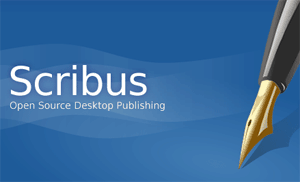 A free Desk Top Publishing / Page mark-up program that offers many of the core features of InDesign, but again as with gimp, it can be a little more tricky to get the best out of this package. With a bit of care, there is no reason why you can’t get really good artwork done with this software, it also supports exporting as PDF files. But, and there is always a but, it does not support bleed in the page layout, a bit of a major omission for desktop publishing software. The work around to this is to make your page size large enough to include bleed, and design with this in mind.
A free Desk Top Publishing / Page mark-up program that offers many of the core features of InDesign, but again as with gimp, it can be a little more tricky to get the best out of this package. With a bit of care, there is no reason why you can’t get really good artwork done with this software, it also supports exporting as PDF files. But, and there is always a but, it does not support bleed in the page layout, a bit of a major omission for desktop publishing software. The work around to this is to make your page size large enough to include bleed, and design with this in mind.
OpenOffice
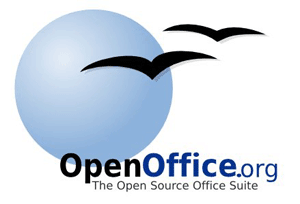 The open source version of Microsoft Office comes with a drawing / page layout package called “Draw”. Behind the surface you will find some really good tools, it works in CMYK and makes PDF files, so you can get some really good work done here. There a few drawbacks, it does not support bleed, so you will have to build this into the page set-up, and it can feel a little fiddly to use, but that might be because I am used to Adobe products.
The open source version of Microsoft Office comes with a drawing / page layout package called “Draw”. Behind the surface you will find some really good tools, it works in CMYK and makes PDF files, so you can get some really good work done here. There a few drawbacks, it does not support bleed, so you will have to build this into the page set-up, and it can feel a little fiddly to use, but that might be because I am used to Adobe products.
Having said all of that, I believe that much of the artwork that we get supplied from packages like InDesign and Quark, could easily be done with”Draw”.
Cute PDF
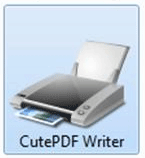 We are often asked if we can accept files from X, Y Z unknown to us software that has been downloaded from the internet or that has come pre-installed on a computer. The answer is “no” if the software does not support exporting artwork in common file formats, most CD manufacturers prefer to work from PDF files these days .
We are often asked if we can accept files from X, Y Z unknown to us software that has been downloaded from the internet or that has come pre-installed on a computer. The answer is “no” if the software does not support exporting artwork in common file formats, most CD manufacturers prefer to work from PDF files these days .
Most of these types of software cannot produce PDF files, but Cute PDF will install a PDF print driver that will allow you to print as a PDF file. The process is fairly simple, you send your artwork to print as normal, but select the Cute PDF printer instead of your usual paper printer, this will then ask you to save a PDF file.
The PDF output settings will need to be set for high resolution print, at least 300 DPI for colour and grayscale images, and 2400 DPI for black and white images.
CD Mastering & Audio Editing Tools
DDP Creator
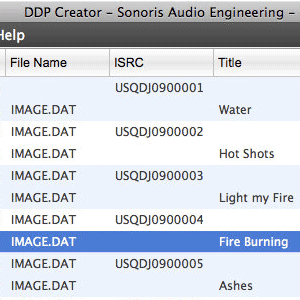 I was in two minds about recommending this software, not because there is anything wrong with it, quite the opposite, it is utterly brilliant. It’s that this is a relatively small company that give a 15 day fully functional trail of the software, I wouldn’t like to see people take too much advantage of this generosity. If you make CD masters, even on an infrequent basis, and your current mastering software does not make DDP files, this is a great investment that will pay for itself very quickly. I should know, as I use this on a daily basis.
I was in two minds about recommending this software, not because there is anything wrong with it, quite the opposite, it is utterly brilliant. It’s that this is a relatively small company that give a 15 day fully functional trail of the software, I wouldn’t like to see people take too much advantage of this generosity. If you make CD masters, even on an infrequent basis, and your current mastering software does not make DDP files, this is a great investment that will pay for itself very quickly. I should know, as I use this on a daily basis.
So what does it do? Quite simply it allows you to sequence your audio files in the correct order, set the desired gaps between tracks, add CD Text information, add ISRC codes and create a CD-R master, and more importantly a DDP master. DDP files are the best ways to supply masters to CD manufacturing companys for glass mastering, as they allow fast transfer by FTP with the ability of quickly checking the files for errors.
At first it looks quite basic, and in some ways it is, but like all great software, it gives you powerful tools with rock solid reliability with the minimum of clutter. I know that some top end mastering engineers were consulted overt the user interface, and it shows.
Orban Loudness Meter
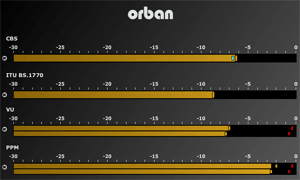 “But these go to 11” And thanks to the legendary Nigel Tufnel of Spinal Tap we all know that 11 is one louder than 10! But in all seriousness, the human ear is great at judging level, but it can’t tell you what the digital level on an audio file is, but this handy tool can help. And a bunch of nifty other tricks as well.
“But these go to 11” And thanks to the legendary Nigel Tufnel of Spinal Tap we all know that 11 is one louder than 10! But in all seriousness, the human ear is great at judging level, but it can’t tell you what the digital level on an audio file is, but this handy tool can help. And a bunch of nifty other tricks as well.
We are still entrenched in the “loudness wars” for CD mastering, so don’t use this to see if you can squeeze a little more headroom out of your audio, but a great little program to check peak and average levels. The Orban site has some interesting info on the use of this meter, and it is well worth taking the time to have a read.
Audacity
 Let’s get this straight, I am not saying ditch your Sadie, Sequioa or even Wavelab CD mastering software for this, but it really is quite adequate for simple tasks. If all you need to do is get rid of a bit of noise at the beginning or end of a track, or a simple edit, this will do the job nicely. So lets not be too snobby about it. Although I have never played with the effects it comes bundled with, my head tells me they should really be left alone, and if you need “creative mastering” speak to the professionals.
Let’s get this straight, I am not saying ditch your Sadie, Sequioa or even Wavelab CD mastering software for this, but it really is quite adequate for simple tasks. If all you need to do is get rid of a bit of noise at the beginning or end of a track, or a simple edit, this will do the job nicely. So lets not be too snobby about it. Although I have never played with the effects it comes bundled with, my head tells me they should really be left alone, and if you need “creative mastering” speak to the professionals.
So there you have it, using these tools, you can create artwork and masters to a level that is as good as the professionals. It is also worth mentioning that most of the great album covers over the last 30 years have actually been fairly basic, a strong image with good typography. If the images or the idea is weak, the best software in world will not help.
Creative mastering is different to photo editing, it’s not so easy to fix wayward mixes. It’s not just about having some cool software, you will need a good sounding room with high grade monitors. An experienced mastering engineer will be able to listen to your tracks with a fresh set of ears. They will use their experience to make critical judgements and add the final touches to create an “album” from a set of mixes. However, if you are pleased with the mixes that you have come out of the studio with, then compiling the master is not out of your reach.
So now with the money you saved you afford to go for the desirable CD digipak that you always wanted.
Of course this is only a small selection of the free / limited time trial software that you can use, if you can think of anything that is worth adding, drop me a comment, and I may add it to the list.

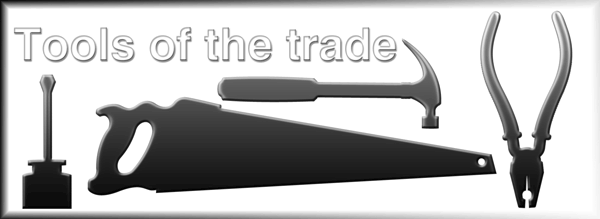



Just to add to your list here, Mac users might want to look at Wave Editor by Audio-file. It isn’t particularly pretty and has one of the most frustrating user interfaces I’ve encountered in a while… but it will produce and import DDP masters and a full licence is well under £100.
Good tip Matt, the feature list looks impressive for the money, and you also get a 15 day trial. Will add that to the list in the next blog update, in the meantime for those want to check it out here is a link http://www.audiofile-engineering.com/waveeditor/